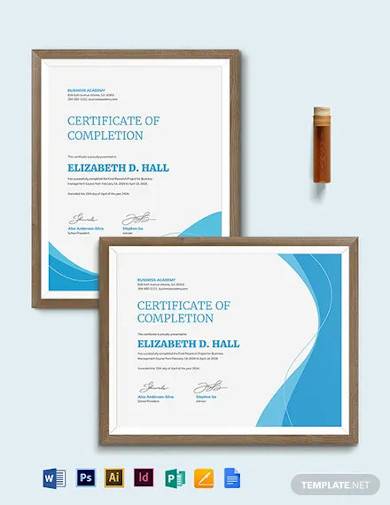System design interviews can be quite open-ended and require a wide range of knowledge.
Google docs to adobe indesign A journey into the world of working with third party applications can open up many opportunities for exploration. This is where I have found myself lately looking for ways to automate Google Docs for import into Adobe InDesign. Google takes abuse of its services very seriously. We're committed to dealing with such abuse according to the laws in your country of residence. When you submit a report, we'll investigate it and take the appropriate action. We'll get back to you only if we require additional details. 382+ FREE CONSTRUCTION Templates - Download Now Adobe PDF, Microsoft Word (DOC), Microsoft Excel (XLS), Adobe Photoshop (PSD), HTML5, WordPress, Google Docs, Microsoft PowerPoint (PPT), Adobe InDesign (INDD & IDML), Apple (MAC) Pages, Google Sheets (SPREADSHEETS), Microsoft Publisher, Apple (MAC) Numbers, Adobe Illustrator (AI), Apple (MAC) Keynote, Google Slides.
To prepare well for such kind of interviews, it’s important to cover different areas instead of focusing on a single topic. We’ve spent a lot of time selecting system design questions to analyze, our main criteria are:
- The question is popular and classic
- We care about the diversity of questions we select
- The analysis can be helpful to other interview questions
This week, we’d like to discuss how to design Google Docs. You will find it quite different from the analysis of our previous questions.
Question – How to design Google Docs
I’ll assume everyone knows what Google Docs is and won’t waste time introducing this product.
The question looks quite general at first glance and it indeed is. Google Docs is a huge system with tons of features. If you spend few minutes thinking about his problem, you may realize that Google Docs is much more complex than it seems to be.
As an interviewer, I don’t like to limit the scope of discussion to a specific feature of this product. Instead, I lean toward making the question broad and general so that I can know how candidates will address a vague problem step by step.
Divide into components
We’ve emphasized many times in our previous posts that it’s recommended to provide high-level solutions when the question is big. And one way to abstract your solution is dividing a big system into smaller components.
Apparently, Google Docs is a huge system that has a bunch of features, including doc storage, share docs, formatting, editing and so on. In fact, I can barely address such a big problem without separating it to different sub-problems.
If you haven’t thought about this problem, please spend 5-10min to have your own answer before checking our analysis. Also, it’s worth to note that it’s absolutely okay if your solution is different from ours since the question is open-ended.
We can divide the whole system into the following major components:
- File storage. Since Google Docs is part of Google Drive, I include the storage feature as well. The system allows users to group files (docs) into folders and support features like edit/create/remove etc.. It works like an OS.
- Online editing and formatting. There’s no doubt that one of the core features of Google Docs is online editing. It supports almost everything of Microsoft Office and maybe more.
- Collaboration. It’s truly amazing that Google Docs allows multiple people to edit a single doc simultaneously. This is a technical challenge for sure.
- Access Control. You can share docs with your friends and give different permissions (owner, read-only, allow comment etc.).
A bunch of less important features are ignored here, like add-ons, spell-checking, publish to the web and so on.
Storage and Formatting
I put these two topics together since with storage and formatting implemented, a very basic and naive version of Google Docs is created. Even if there’s no access control and collaboration, a single user can still use it to edit docs.
Also, storage and formatting can be regarded as backend and front-end to some extent.
IMHO, the storage system of Google Docs (or Google Drive) is very close to an operating system. It has notions like folders, files, owners etc..

Therefore, to build such system, the basic building block is a file object, which contains content, parent, owner and some other meta data like creation date. Parent denotes the folder relation and the root directory has empty parent. I won’t discuss how to scale the system as building a distributed system can be extremely complicated. There are tons of things to be considered like consistency, replication.
For the front-end formatting, an interesting question is how you would store documents with corresponding formats. If you know Markdown, it’s definitely one of the best solutions. Although Google Docs can be more complicated, the basic idea of Markdown still applies.
Concurrency
One of the coolest features of Google Docs is that multiple people can edit a single doc simultaneously. How would you design this feature?
This is not an easy problem, to be honest. You can’t just let each person work on his own and then merge everyone’s copy or the last one to edit wins. If you have tried the collaborative editing feature, you can actually see what the other person is doing and you get instant feedback.

If you have used Git for version control, some of the ideas here can be similar. First, let’s consider the simplest case – only 2 people are editing the same doc. Assuming the doc is “abc”.
Basically, the server can keep 2 copies of the same doc to each person and tracks the full revision history as well. When A edits the doc by adding “x” in the beginning, this change will be sent to the server together with the last revision seen by A. Suppose at this time, B deletes the last character “c” and this change is sent to the server as well.
Since the server knows the change is made on which revision, it will adjust the change accordingly. More specifically, B’s change is deleting the 3rd character “c”, which will be transformed to deleting the 4th character as A adds “x” in the beginning.
This is called operational transformation. It’s okay if you never heard of this. The basic idea is to transform each person’s mutation based on its revision and revisions from other collaborators.
Access Control

Google Docs allows you to invite collaborators to each doc with different level of permissions.

A naive solution shouldn’t be hard. For each file, you can keep a list of collaborators with corresponding permissions like read-only, owner etc.. When one wants to do specific actions, the system checks his permission.
Usually, I’d like to ask what are challenges to scale such access control system.
As is known to all, when scaling system to millions of users, there can be a lot of issues. Few things I’d like to mention here are:
- Speed. When the owner updates the permission of a folder (e.g. remove a specific viewer), this update should be propagated to all its children. speed can be a concern.
- Consistency. When there are multiple replications, it’s non-trivial to keep every replica consistent especially when multiple people update the permission at the same time.
- Propagation. There can be a lot of propagation cases. Besides updating the permission of a folder should reflect on all its children, if you give read permission of a doc D to someone, he may have read permission to all the parents of doc D as well. If someone deleted doc D, we may revoke his read permission of D’s parents (maybe not, this is more of a product decision).
Convert Indesign To Google Docs
Summary
Again, none of us at Gainlo has ever worked on Google Docs. This post is not teaching you how to build Google Docs from scratch.
Convert Indesign To Google Docs
Instead, I’d like to use this post to give you more ideas of how system design interviews are conducted and how you can address a vague problem.
Designing a complex system like Google Docs can be intimidating. But once you divide the system into smaller components, it becomes much simpler.
If you find this post helpful, I would really appreciate if you can share it with your friends. Also you can check more system design interview questions and analysis here.
Google Docs Indesign
The post is written by Gainlo - a platform that allows you to have mock interviews with employees from Google, Amazon etc..
I'd like to learn more
Related posts:
